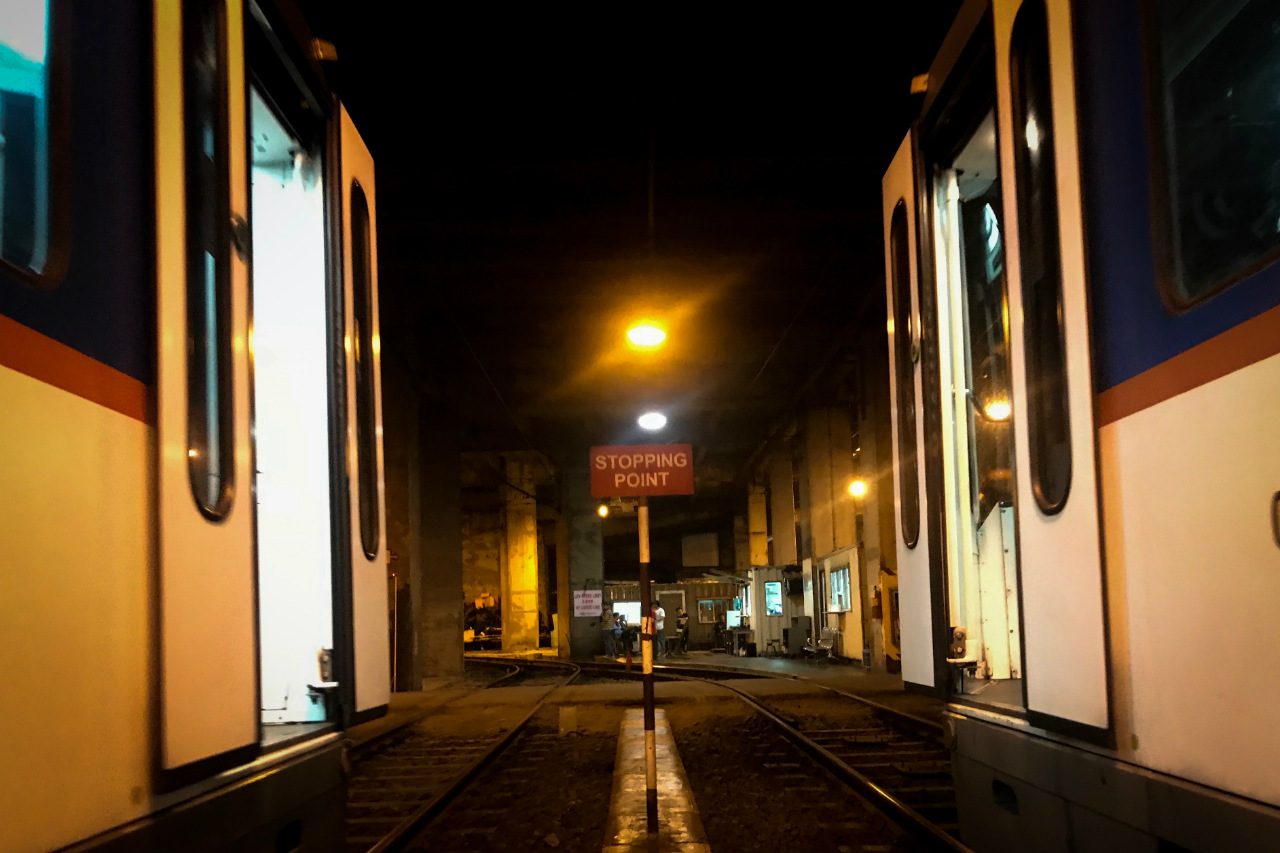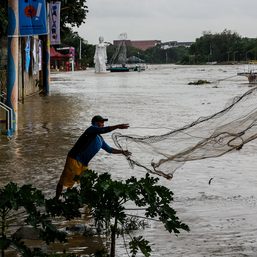SUMMARY
This is AI generated summarization, which may have errors. For context, always refer to the full article.

MANILA, Philippines – In a bid to upgrade railway services, the Metro Rail Transit Line 3 (MRT3) management finally managed to field 10 trains this week.
On Sunday, March 4 at 6:40 pm, the MRT3 operated with 10 running trains. The last time there were 10 working trains was a month before on February 4.
The MRT3 even managed to average 10 trains on Tuesday, March 6, serving 277,142 passengers.
The number of MRT3 trains dwindled to less than 10 in February – as few as 6 running trains were available on a given day to the commuting public. The MRT3 scrambled to reach 10 working trains the entire month as spare parts were delivered mid-February.
Improvements followed after the MRT3 experienced its longest glitch-free streak, but a breakdown incident on March 3 ended the “lucky” streak.
From March 5 to March 8, the MRT3 averaged 9 working trains serving around 280,000 passengers daily.
Three breakdown incidents happened in March – two of which were due to signalling problems, while another one was caused by electrical failure in the affected train’s motor. There have been a total of 41 incidents since the year started.
10 trains running
On Saturday, March 3, some 750 people were unloaded at GMA-Kamuning due to electrical failure at 2:06 pm. The glitch ended the 9-day glitch-free streak of the MRT3. The day averaged 8 working trains serving close to 222,000 passengers.
On Sunday, March 4, the MRT3 management was finally able to deploy 10 trains at 6:40 pm. The day ended with an average of 9 working trains serving some 152,000 passengers.
On Monday, March 5, the day opened with 9 working trains. Ten trains were finally available by 11 am. However, a glitch involving a signalling error in a Southbound train unloaded 350 passengers at Quezon Avenue, making only 8 trains available for operations.
Despite the glitch, the day closed with 9 working trains on average, serving some 290,000 passengers.
On Tuesday, March 6, the day opened with 10 running trains at 6 am. The MRT3 was able to maintain the number of trains throughout the day at 10, and served around 277,000 passengers.
On Wednesday, March 7, 9 trains were available by 6 am but it went up to 10 trains by 9 am. The day averaged 9 working trains serving close to 281,000 passengers.
On Thursday, March 8, a breakdown incident happened a few minutes when the revenue line opened at 5:33 am. Some 850 passengers were unloaded at Guadalupe Station due to a signalling problem. After the incident, the MRT3 operated at 8 trains at 6 am.
By 8 am, the number of trains increased to 9. The MRT3 gave free rides to women during rush hour for the International Women’s Day from 7 am to 9 am, and 5 pm to 7 pm. The day closed with MRT3 serving some 276,000 passengers.
Deadlines
As the MRT3 scrambles to maintain the available trains at 10, the deadlines set by the transportation department are closing as well.
Department of Transportation (DOTr) Secretary Arthur Tugade promised that by April, there should be at least 15 running trains for the public to use.
The assessment of the “overweight” 48 trains delivered by China-based CRRC Dalian Company Limited is due on March 10. The assessment will determine whether these trains are safe for the public to use.
Earlier this February, engineers from the Japanese International Cooperation Agency (JICA) began a system audit of the MRT3. JICA is expected to release a report on the restoration works needed for the railway system.
On Friday, JICA presented the initial results of the report to Transportation Undersecretary Timothy John Batan. According to the MRT3 management, the final report will also help determine the scope of work by the new rehabilitation and maintenance service provider.
The DOTr targets to sign a loan agreement with Japan – which will help select the new service provider around May.
The number of trains was drastically decreased after the MRT3 Maintenance Transition Team took over, as trains and spare parts left by the former maintenance provider Busan Universal Rail Incorporated (BURI) was not in the right condition needed, the DOTr earlier said.
On Thursday, Presidential Spokesperson Harry Roque said Malacañang wants new cases to be filed against former transportation officials – on top of a plunder complaint already filed. Roque alleged maintenance funds were diverted to a certain “Pangasinan group” for political machinery.
Roque traced the train’s glitches to the alleged diversion of MRT3 maintenance funds.
In 2017, there were 516 MRT3 glitches recorded – almost 10 incidents a week. (READ: MRT3 suffers almost daily breakdowns since start of 2018) – Rappler.com
Add a comment
How does this make you feel?





There are no comments yet. Add your comment to start the conversation.